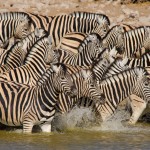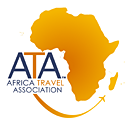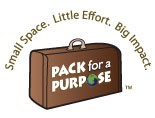Down and Dirty in Africa – Cairo to Cape Town Part 3
Our journey, Cairo to Cape Town overland, started in Jordan before experiencing the lengthy process to entering Egypt. We off-roaded through Sudan for 340kms across the Nubian Desert, was visited by locals on donkeys and camels selling souvenirs while bush camping near Meroe Pyramids, we have been marveled with ancient sites in Ethiopia, explored some of the best game parks in East Africa including Nakuru NP, trekked critically endangered Mountain gorillas in Uganda, came face to face with a Cheetah in the Serengeti; Elephants wandered into our camp in Ngorongoro Conservation Area, danced with traditional Masai Warriors and chilled out on the World famous spice Island, Zanzibar as we continue our way to Malawi overland – Cairo to Cape Town. 5 expedition Land Rovers, 3 Aussies, 5 Kiwis and 1 German; 4 months from top to bottom of the Africa continent.
Malawi is most famous for its Lake, described more like a sea; Lake Malawi covers over 1/3rd of the country. The clear clean water is rather inviting as is the tasty fish!
We spent a few days on the shores of Lake Malawi, world renowned for the rare and unique fresh water fish (some of which prehistoric) living in the Lake. We stayed at a tiny eco-lodge built on a cliff with its own private sandy beach; the views spectacular, rooms very comfortable and hospitality unbeatable. We arrived at about the same time the rain clouds did creating a mad panic to get our cooking shelter up; the rain beat us in the race and some of us were rather soaked – at least the air was warm and to be honest the free shower was welcomed. Luckily our charcoal BBQ fire survived long enough for me to BBQ our pork chops for dinner; the rain did not let up and several hours later was still bucketing down. The first real rain we have experienced in 3 months of traveling …….
Up high in the highlands of Malawi is a little settlement called Livingstonia. The name itself indicates a tribute to the great explorer himself; David Livingstone. David Livingstone spent very little time in Malawi itself although he did make several trips across the land preaching anti-slavery and messages from the Bible. Some decided to travel up the steep gravel road in the wet while others decided hiring a catamaran was a better idea.
Crossing into Zambia was a very easy process indicating we were closer to southern Africa and more western systems in place. SouthLuangwaNational Park is Zambia’s number 2 tourist attraction; second only to the mighty Victoria Falls however the road to access the park is the worst road we traveled on through Southern Africa. Large holes, heavy corrugations, narrow boggy strips, sharp rocks and deep ravines cut through heavy tropical rain for approximately 40kms. We had been told the road was impassable but you never know unless you try; the plan was simple – see how we go ……….
We reached the turn-off to South Luangwa and the road slowly deteriorated, although it had been visibly very wet and boggy in parts; the road had dried enough to get through without too many hiccups. We were 5kms from South Luangwa when the fun really started; 800m of deep bog holes and no way around. We weaved our way around the brim of the holes until we had no choice but to go through – water seeping over the bonnet with the left hand side falling into deeper holes we slowly made our way through without incident – good old Land Rovers!
South Luangwa was definitely worth the trip; an abundance of wildlife on the shores of LuangwaRiver in northern Zambia; we camped on the shores of the river; hippos grunted day and night (with one wandering through the campsite in the middle of the day), and troops of baboons and vervet monkeys played on the tents. We tried our first real game meat – hippo steaks –after a bit of a pounding and flash frying. Surprisingly, they were pretty tasty; a bit like veal …….
After a bit of adventure leaving South Luangwa we were on our way to Victoria Falls, or as the locals know it as Mosi-oa-Tunya (smoke that thunders). In 1855 David Livingstone sat awestruck by this amazing find and in his journal wrote “on sights as beautiful as this, angels in their flight must have gazed”; a perfect way to describe one of the seven natural wonders of the World. Her sheer power throws spray high into the air visible for miles. Victoria Falls is near the town of Livingstone, it is rare to visit a town in Africa which holds onto and is proud of its colonial history. Only a few kilometers from Zimbabwe, Livingstone has become the hub for selling curios (souvenirs) from Zimbabwe. Local Zimbabweans cross the border to earn hard currency, buy basic food products and clothing before crossing the border daily. The hottest souvenirs on sale were Zimbabwean dollars and in particular the latest note, 10 Trillion dollars. To put this into perspective you need 2 10 Trillion dollar notes to buy a loaf of bread (at the time we bought these notes – no idea what it is worth now). It is tragic to see how the jewel of Africa over 10 years has disintegrated into a land of nothing. The best thing tourists can do is to buy goods from the local sellers, no matter how small the item or how cheap every cent helps.
Just before leaving Livingstone we read an article in a travel magazine about the Kazangula ferry – the ferry that takes us across the Zambezi River from Zambia into Botswana – the article talked about how chaotic and difficult the crossing was. With everyone prepared for long delays and queues (strict instructions to keep the vehicles bumper to bumper) we arrived at the border/ferry port. Much to our disappointment the crossing was far from chaotic and the queues non existent; we merely cruised across into Botswana.
Arriving into Kasane at the same time as a huge thunder storm; our tents were up just before the heavens opened. The heavy down pour lasted about 40 minutes before the clouds cleared and the sun shone once again. The afternoon was spent on a game viewing boat cruising up the ChobeRiver. Much to our delight there were hundreds of elephants playing in the shallows with massive hippo pods close by, as crocodiles happily sunned themselves on the shores.
The following morning we headed out on a game drive though ChobeNational Park; with the exception of a young bull elephant only a few feet away from the vehicle the game was rather mellow. Botswana was experiencing an exceptional wet season hence the grass was high making game viewing not ideal. Nonetheless the scenery and birdlife made the morning rather enjoyable.
After the morning at Chobe we continued into the Northern part of Namibia or better known as the Caprivi Strip. This part of Namibia has been the scene of many conflicts over the years and up until only 8 years ago was deemed unsafe to travel through. With the fighting over and an excellent infrastructure making travel very easy we decided to take this route. The Caprivi Strip is also where the first prisoner of war was taken in WW1 – the English Colonial was entertaining the German Colonial (the Brits occupied Zambia and the Germans Namibia – of course it was Rhodesia and German South Western Africa in those days) when the announcement was made that the war had started. The English Colonial turned to the German Colonial and rather politely told him that he may finish his tea and scones but “to let you know you are now my prisoner”.
The Caprivi strip is a perfect place to nip back into Botswana to explore the Northern part of the Okavango Delta. The Delta is alive with over 300 bird species and numerous mammals and of course reptiles. Huge crocs roam the water ways, hippos wallow in the warm water while King Fishers swoop from high above to feast on the catch of the day. A relaxing couple of days on the Kubu Queen houseboat with Greg the Fisherman were an ideal way to explore the area.
As we drove through the northern part of Namibia we were treated to a remarkable sight. A dozen or so African Wild Dog was sitting on the main highway! Wild Dog is rare to see at the best of times, to see a pack so close is not a common occurrence. It was not until later that we discovered one was injured and the rest of the pack was waiting for her to pick herself up and move to safety.
We continued our journey toward Etosha stopping enroute to see the World’s biggest Meteorite. Etosha, although rather wet, didn’t disappoint. Alive with wildlife in the northern part coupled with a lot of muddy tracks gave the vehicles a bit of a workout and a temporary new white paint job!
From Etosha we made a nightstop at a local farm and cheetah reserve. In Namibia cheetahs are deemed a pest and farmers have the right to shoot them. An increasing number of local farms have established reserves for cheetahs. As well as protecting it gives a unique chance to get very close and pat “domesticated” cheetahs. We stopped at one started by a mate of ours Mario; who has 3 domesticated cheetahs and over 40 wild ones living in designated areas on the farm. The wild cheetahs come from surrounding farms, the farmers call the guys at the Cheetah Farm to tell them a cheetah is taking livestock, the boys then trap the cheetah and relocate to the farm. We were greeted upon arrival by a young giraffe, found abandoned a few weeks before and rescued by the Cheetah Farm she has decided to hang around for a while!

Cheetahs are classified as a pest in Namibia, these are rescued Cheetahs are now a tourist attraction in Southern Africa
Namibia is traditionally the land of desert and rocky outcrops. However an unusually wetter than normal wet season transformed Namibia from dry desert to lush green fields with bare mountains creating a dramatic backdrop. We had to change our planned route slightly as we had heard from locals several roads had been cut off due to rivers flooding deeming them impassable.
After over 3 months of driving on everything from perfect tar roads, dirt tracks, sand dunes and narrow mountain passes we were all up for a bit of mud, river crossings and possibly a bit of digging. Most of the roads in Namibia are wide dirt roads with a few made out of salt. The exceptional rains had created chaos all over the country, road closures, flash flooding and long deep muddy stretches.
Despite the sporadic rains we continued on track and spent time on the SkeletonCoast, a desolate stretch of nothing but sand, wind and treacherous seas, home to the largest CapeFur seal colony in the World. A few days exploring the German colonial town, Swakopmund, relaxing and catching up on domestic duties. Then made the journey to Namib-Naukluft National Park to explore the desert, dune 45 and Sousselvei oasis and enjoyed some serious 4x4ing in the process; by the time we made it to Luderitz and the old “gold rush” ghost town of Kolmanskop the heavens had cleared and with the days hot and sun beating down on us it was the first time we really felt like we were in Namibia.
The road to FishRiverCanyon was long and dusty – our final destination in Namibia. FishRiverCanyon is the Grand Canyon to Africa – a masterpiece of art from Mother Nature; rocks carved over millions of years to produce a Canyon over 170kms long and up to 27kms wide in certain points. The full scale of its expanse can only really be appreciated by the air, although our vantage point at the top of the Canyon certainly showed her in her true glamour. On one of our earlier expeditions one group member (who normally drives on the other side of the road) once stated “Gosh; must have taken ages to build that” Everyone headed off in different directions along the rim looking for the best spots for the ideal photo.
Our final country and destination – South Africa. The border crossing was very easy although we did lose our fruit at a fruit fly inspection point. The minute we crossed into South Africa I felt like I was back in Australia. The first 400kms strongly resembles the Flinders Rangers – rocky outcrops, rolling hills and salt bush as far as the eye can see. If it wasn’t for the road signs in Afrikaans and warnings for springbok instead of kangaroos one would truly believe they were in South Australia. We made excellent time on the superb roads (wide, straight and no pot holes!) we decided to push on a bit and spend our final night before Cape Town in Stellenbosch – the Capital of Wine Lands.
We set off down the N1 highway toward Cape Town our final destination. The air was filled with a mixture of excitement of making the 18,000 kms from Aqaba, Jordan and sadness in the knowledge we were about to depart for our homelands. The clouds in the sky nicely represented our feelings. We arrived in Cape Town at our hotel tired but with a sense of satisfaction and achievement – we did it!
We shared a final evening meal, chatted about the good times, remembering the quirky events along the way and the characters we met.
Our final day was spent back in the Wine Lands, tasting wines and enjoying lunch at a local winery, the evening was topped off at the Cape Town Botanical gardens with a glass of wine in-hand listening to a live classical orchestra.
10 adventurers, 5 landies, 4 months, 18,500kms, 12 countries crossed the African continent from top to tail …… Cairo to Cape – The Long Way Down.
Deborah Thiele originally from Adelaide has spent 13 years traveling and overlanding some of the Worlds most challenging destinations. After 2 years leading expeditions in South America she landed on the African continent – the rest is history! She has driven across the African continent 5 times and led numerous expeditions covering almost all countries. Now based in Nairobi, Kenya with her partner Tim run Africa Expedition Support – a specialist tour company specializing in guided self-drive short tours to long expeditions for individuals wanting to experience the African continent to Corporate and media personnel. For more information email info@africaexpeditionsupport.com or peruse www.AfricaExpeditionSupport.com















Reblogged this on http://www.newsafrica.co.uk.